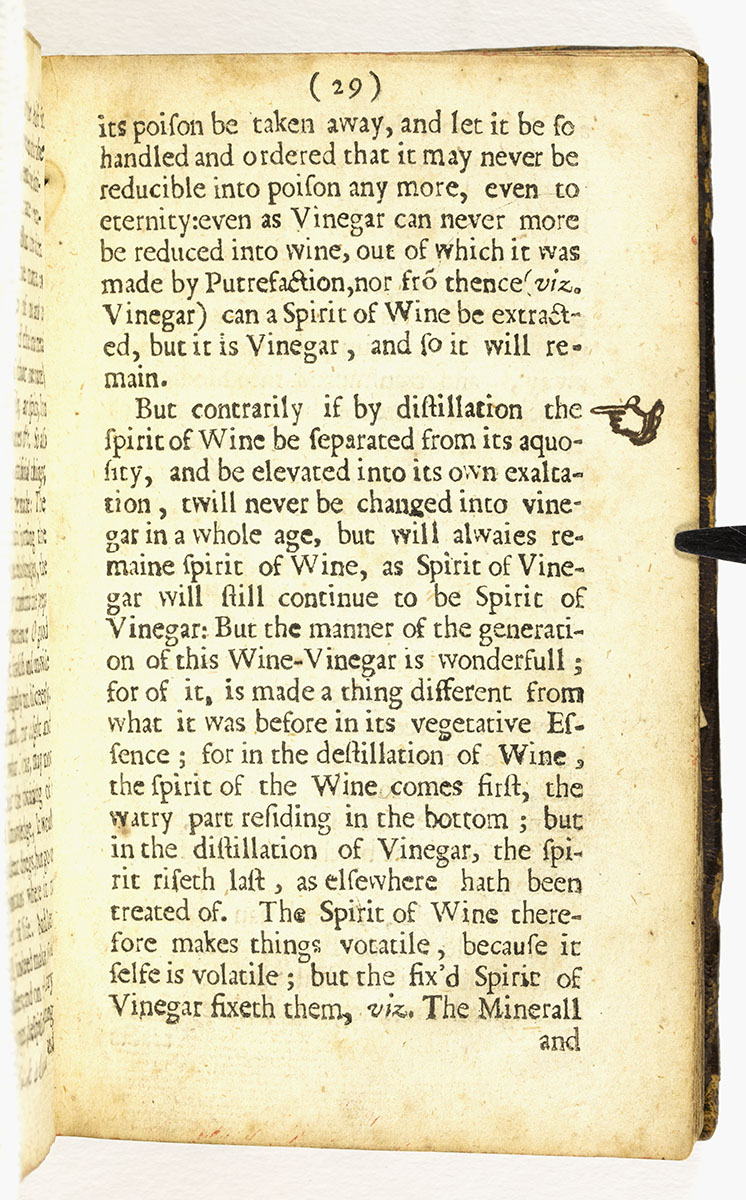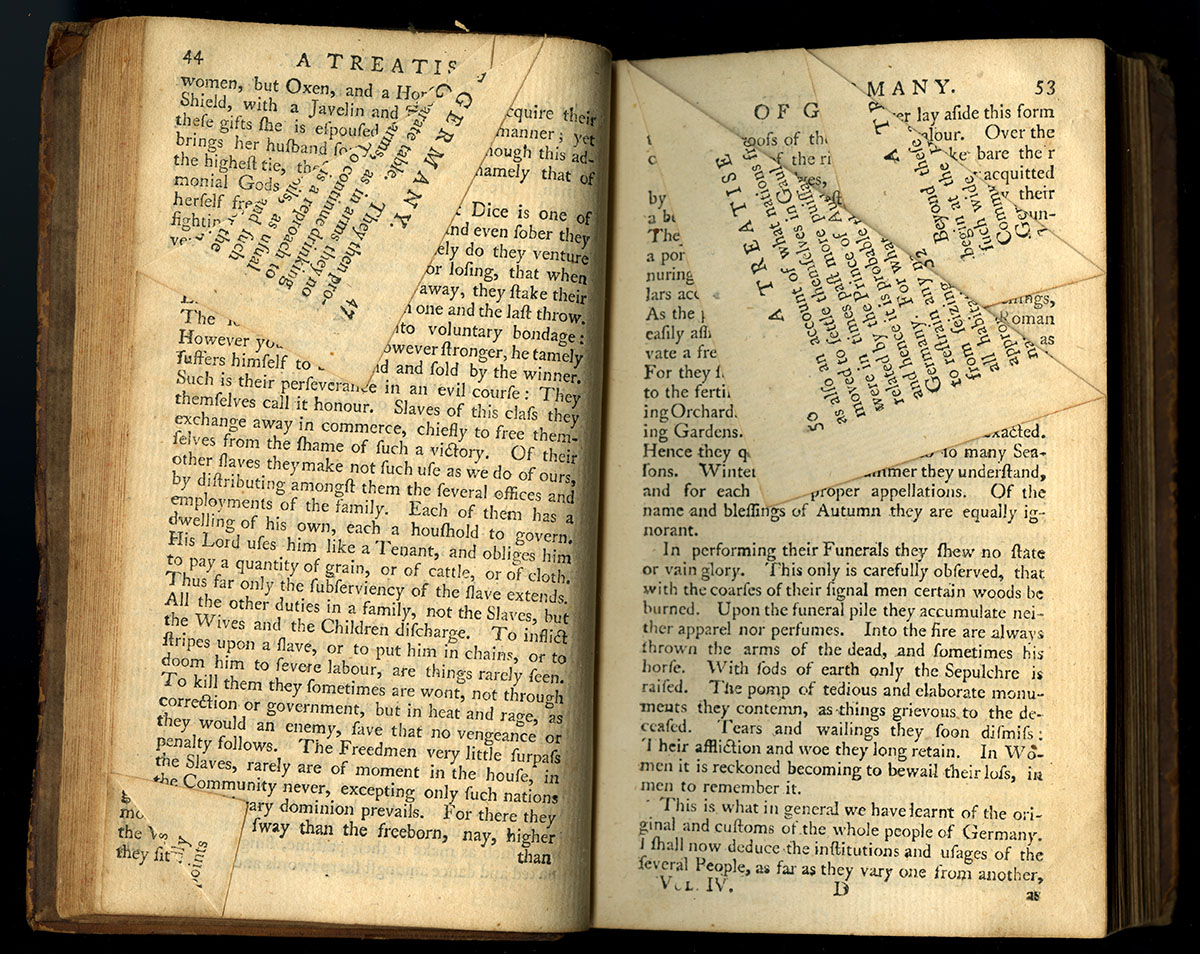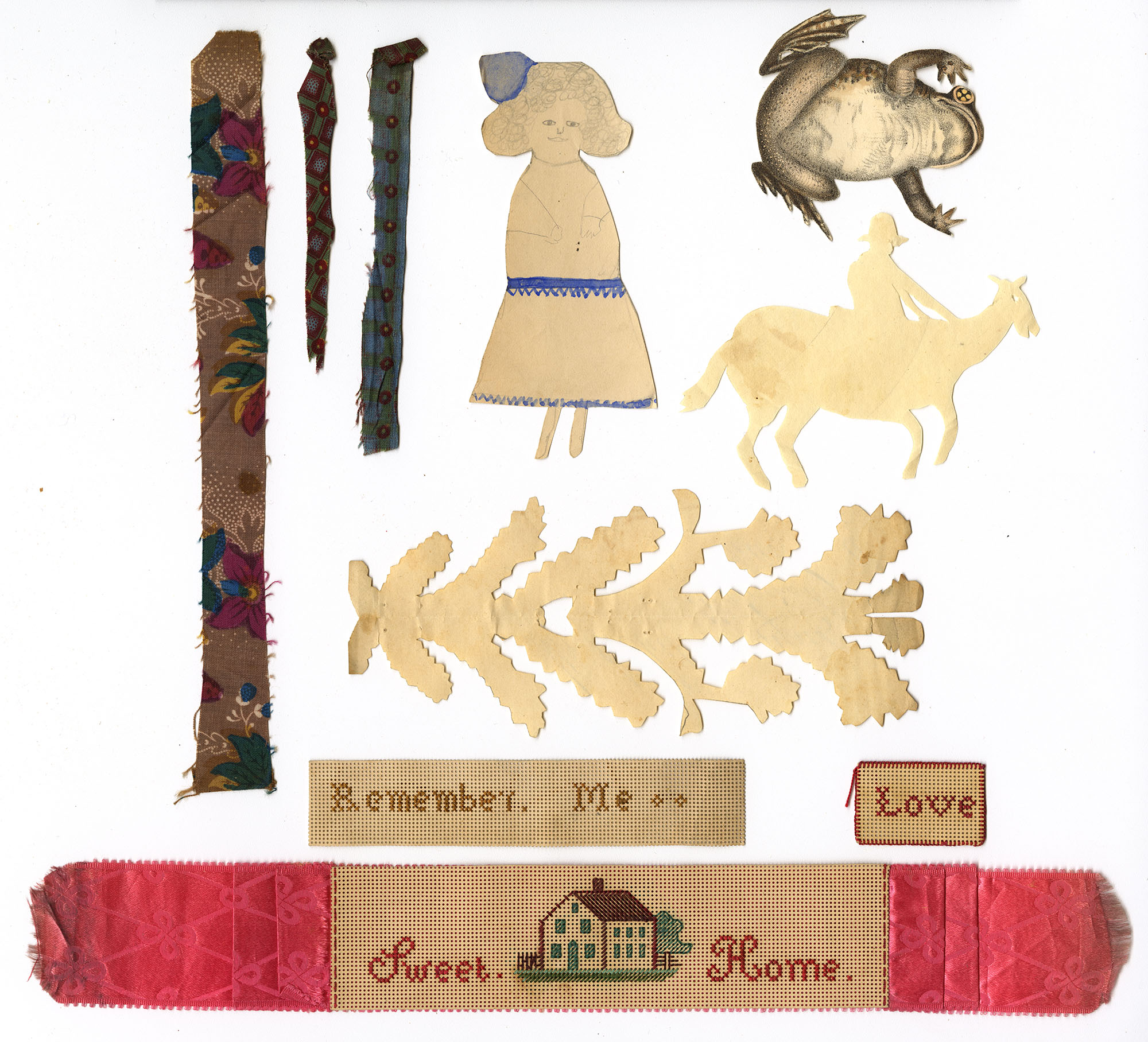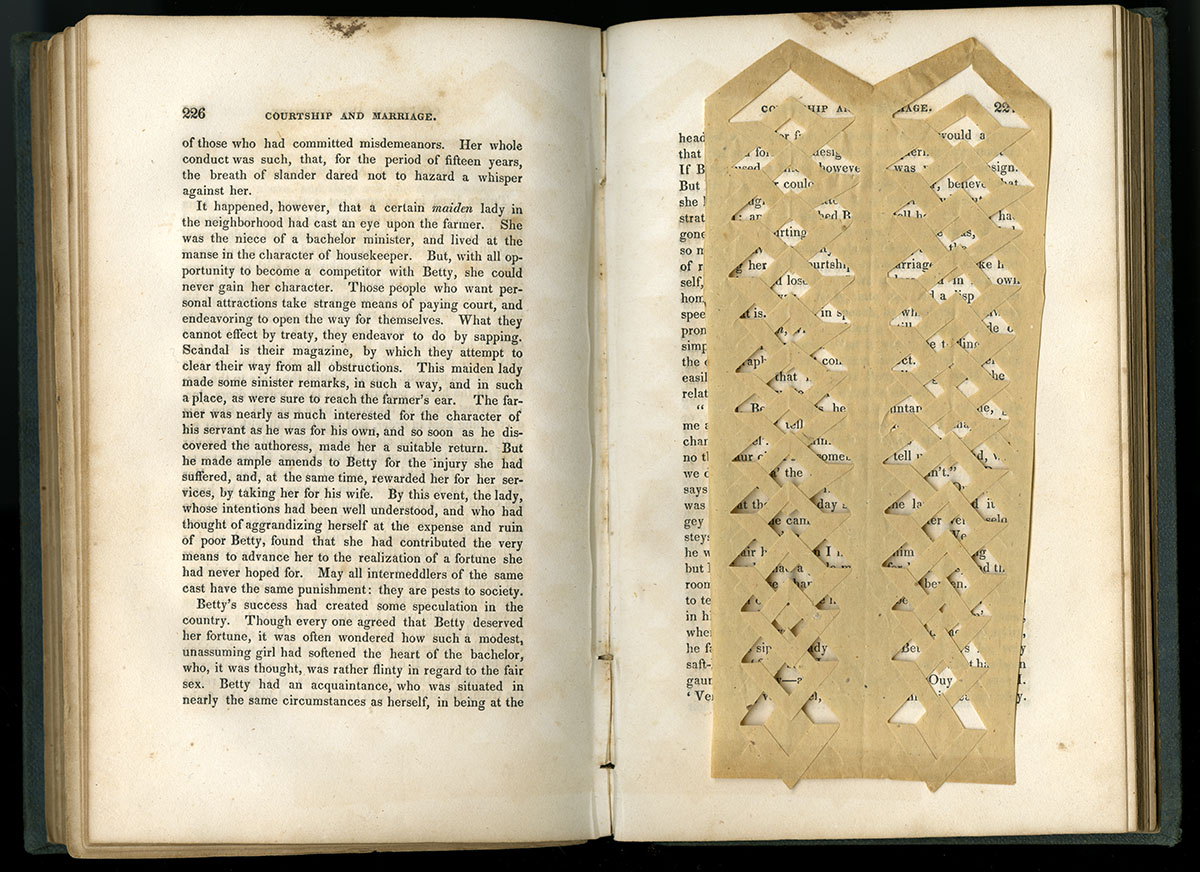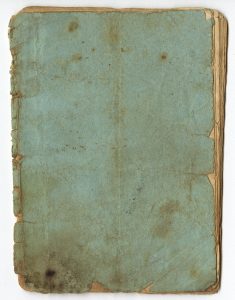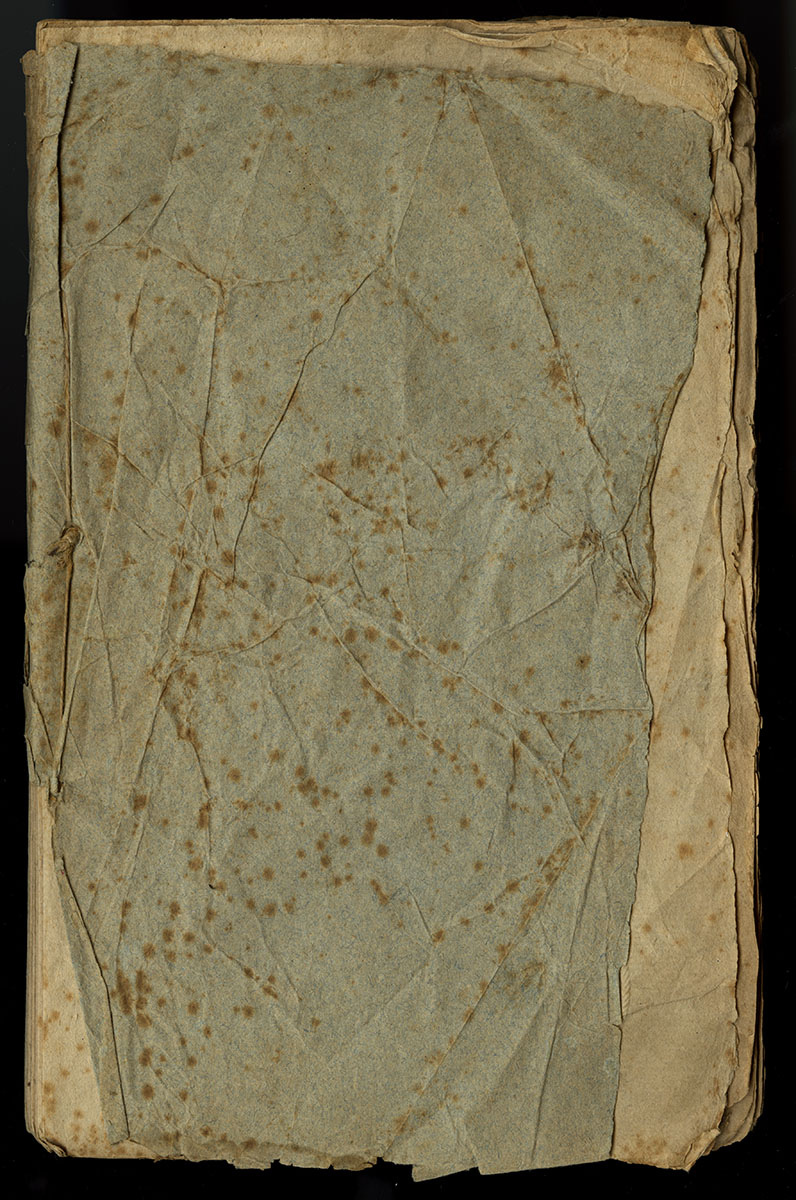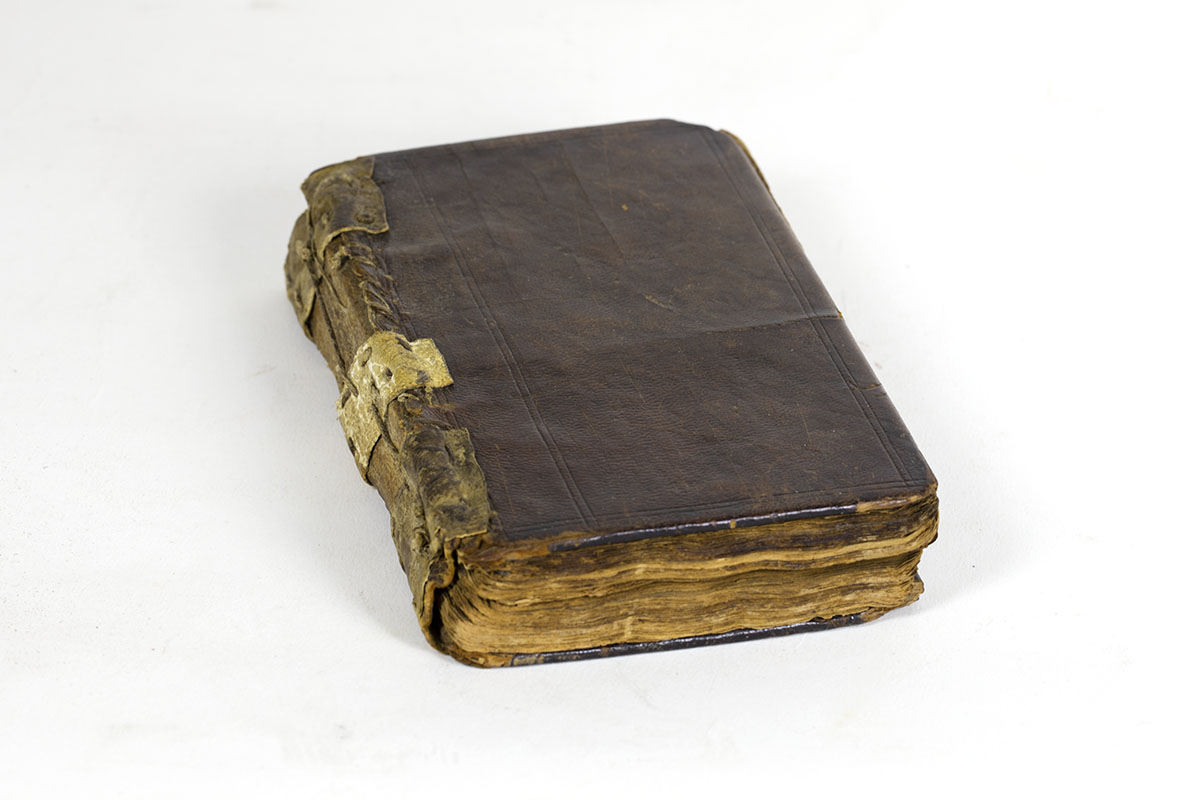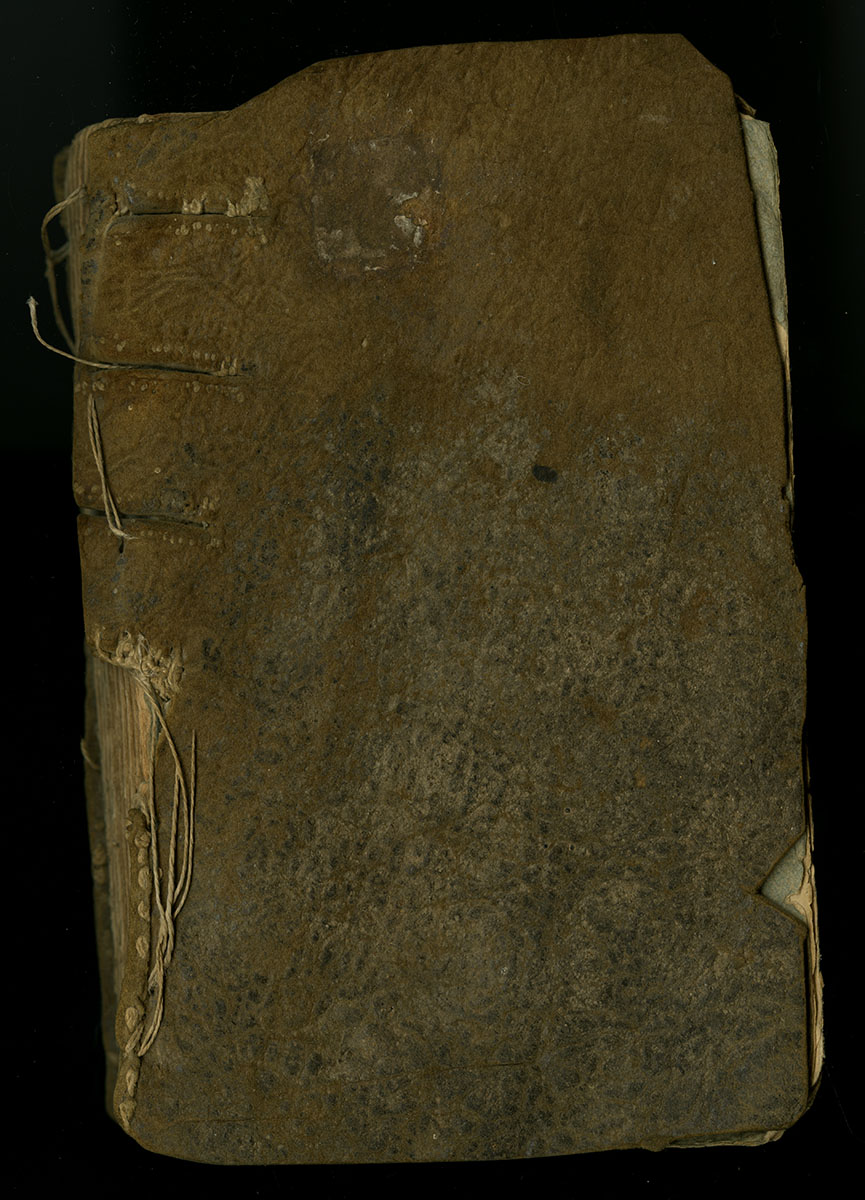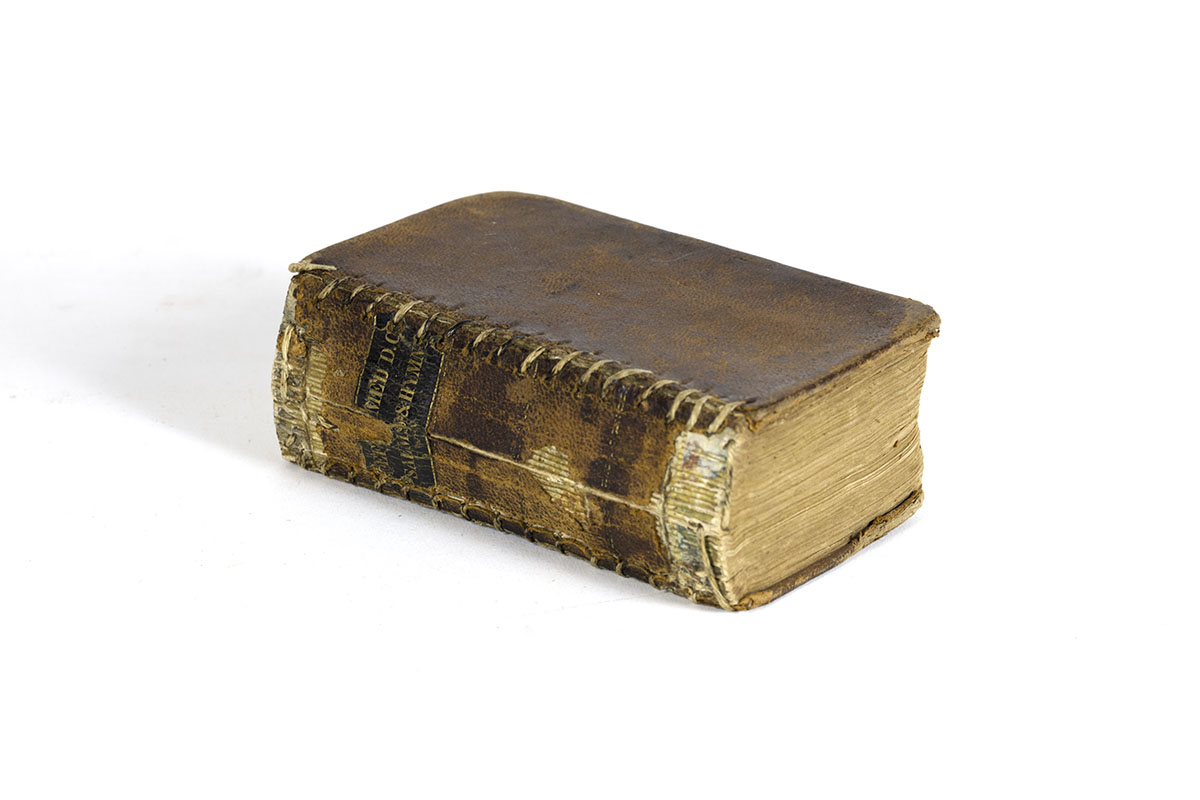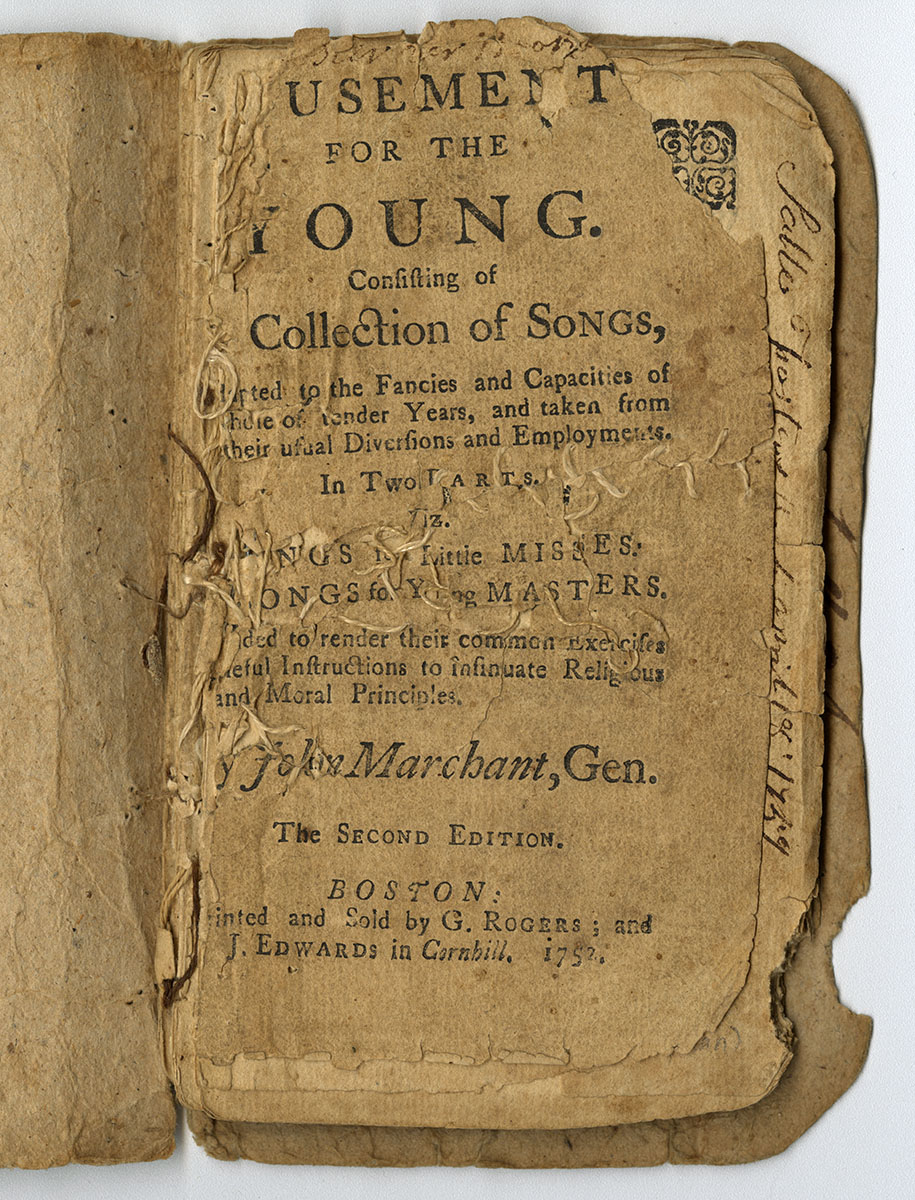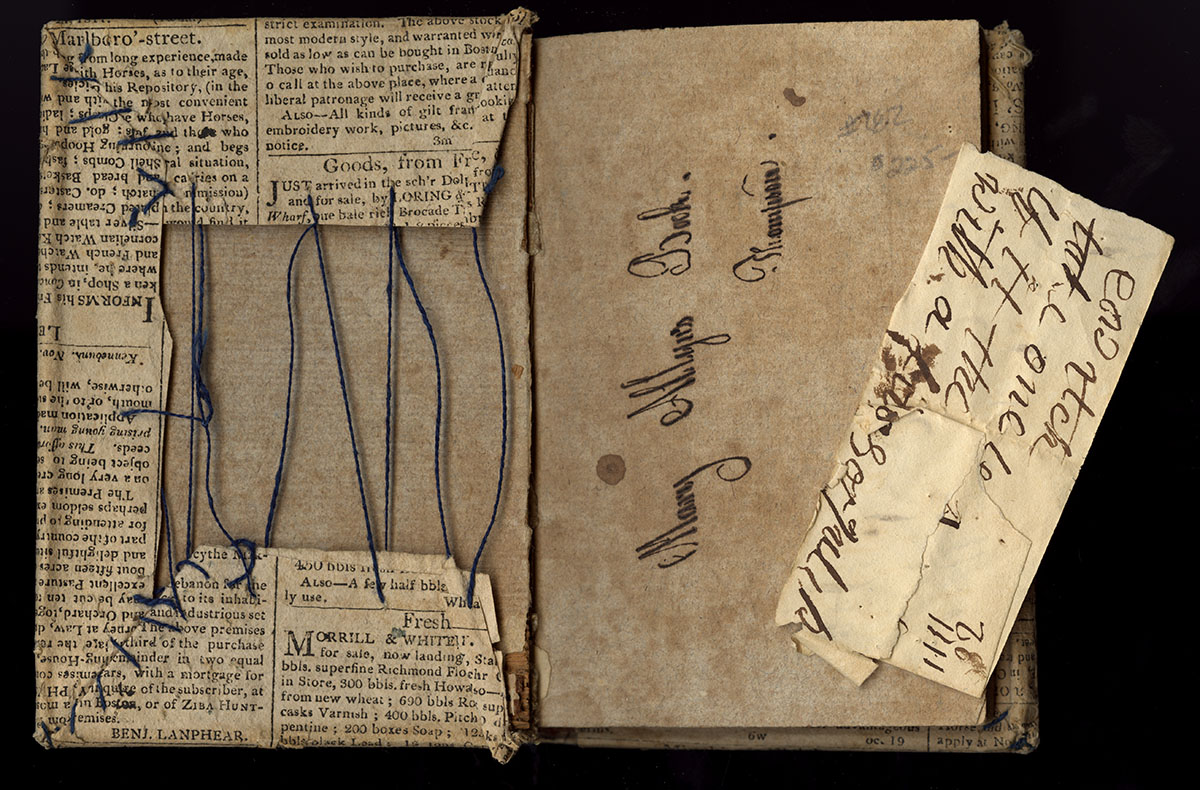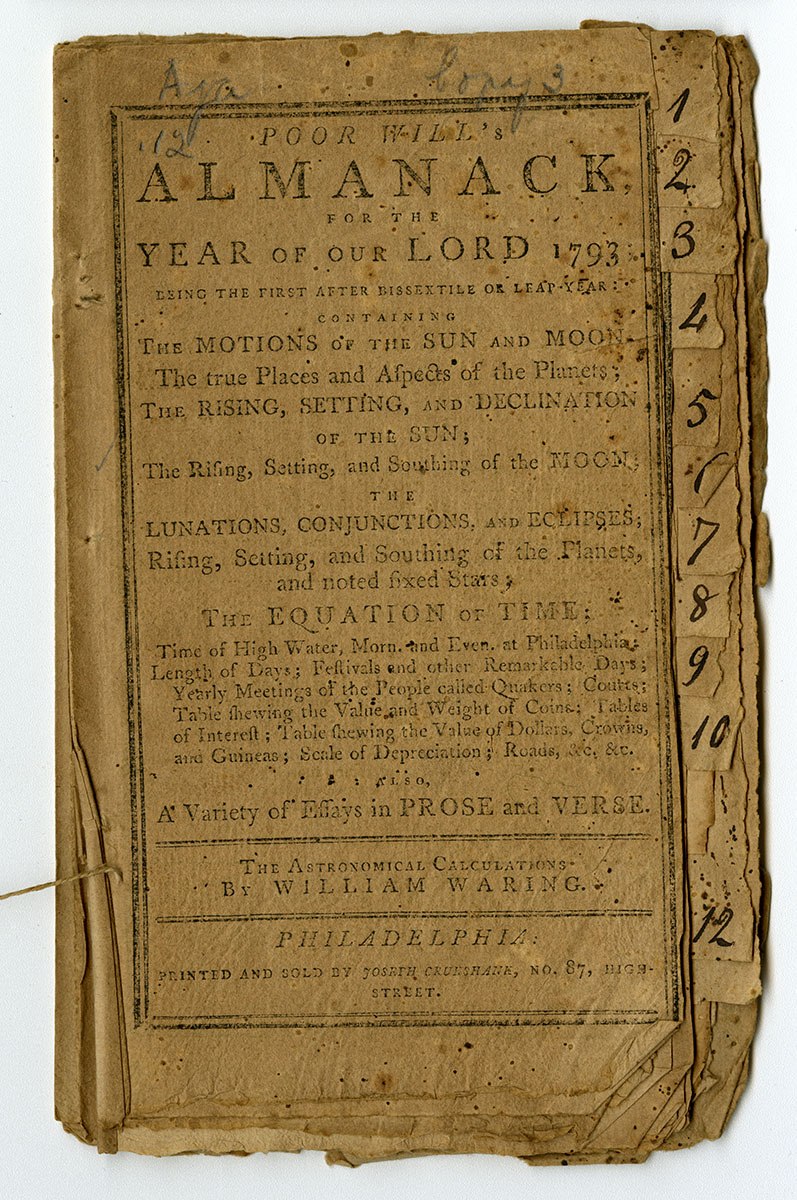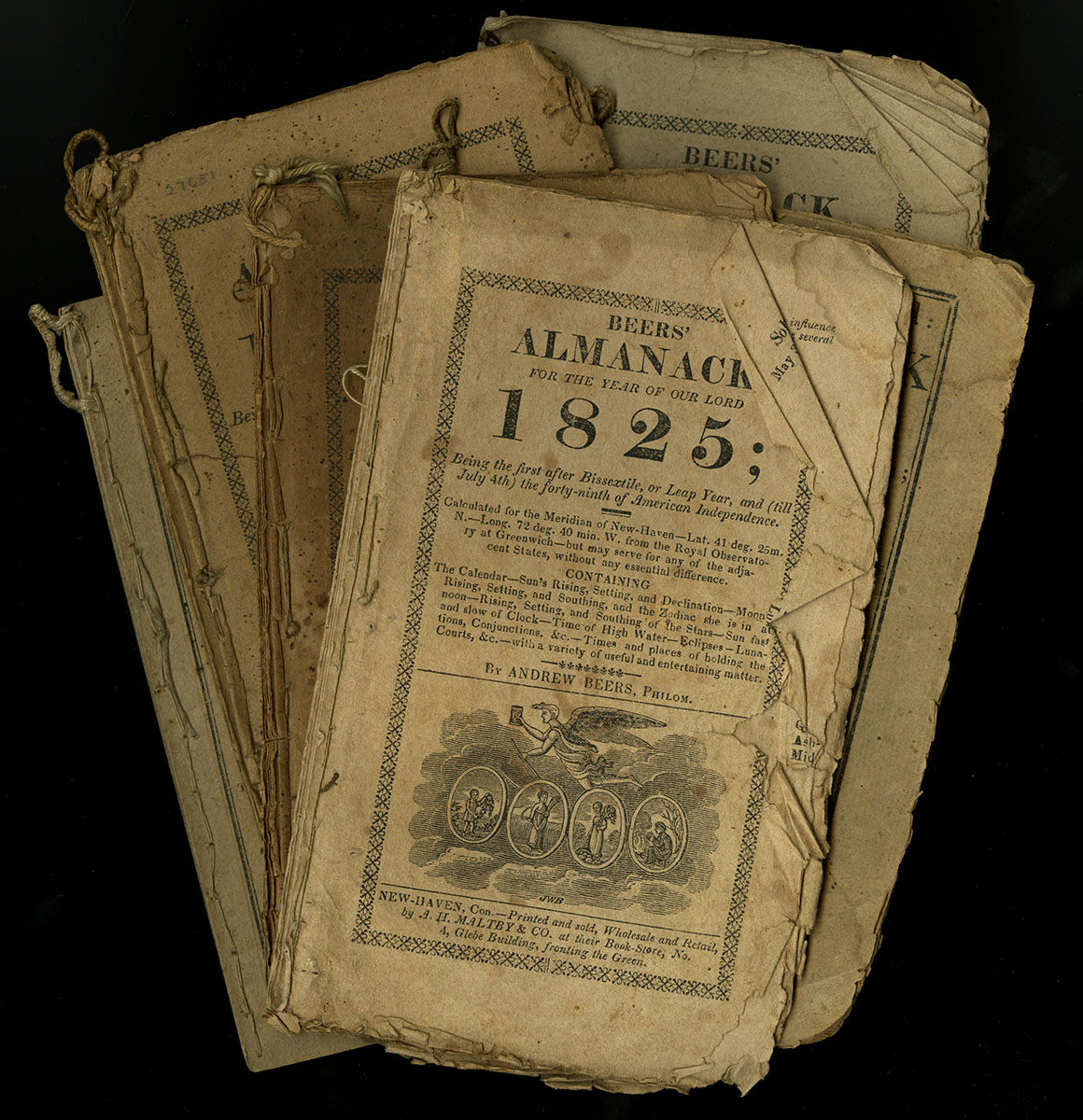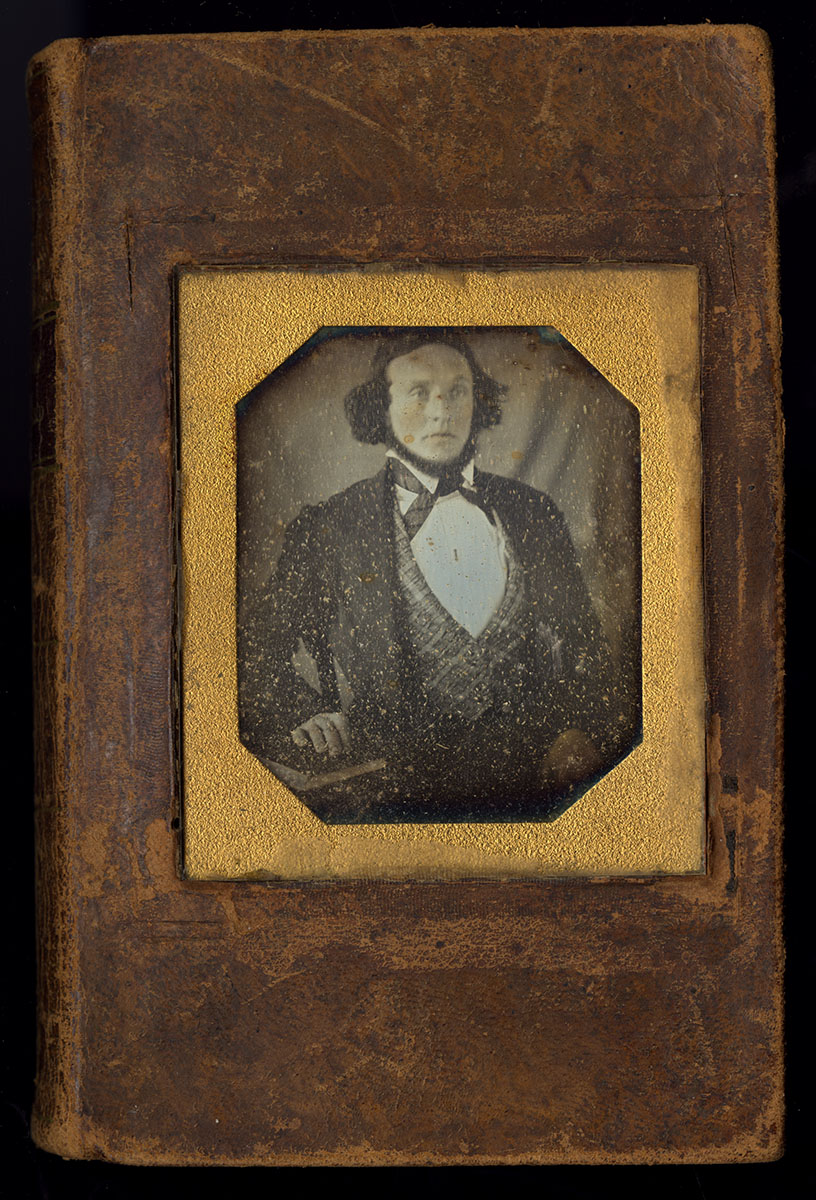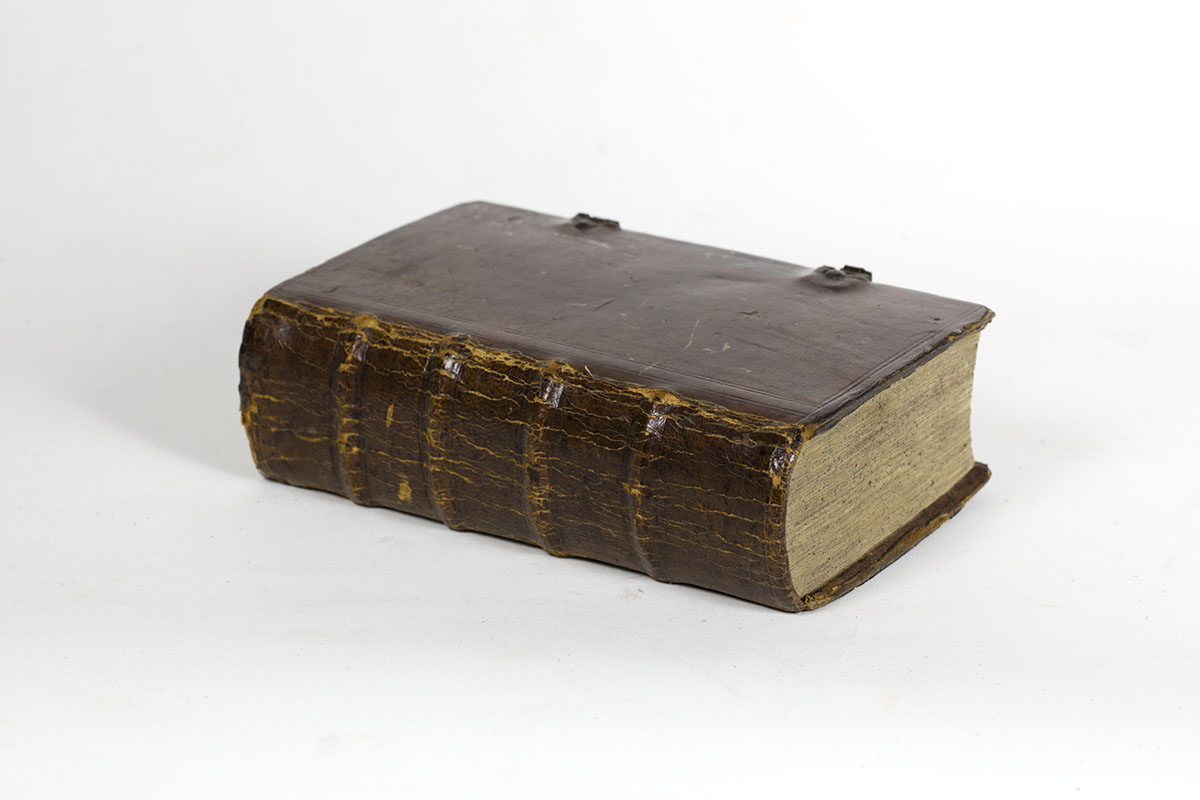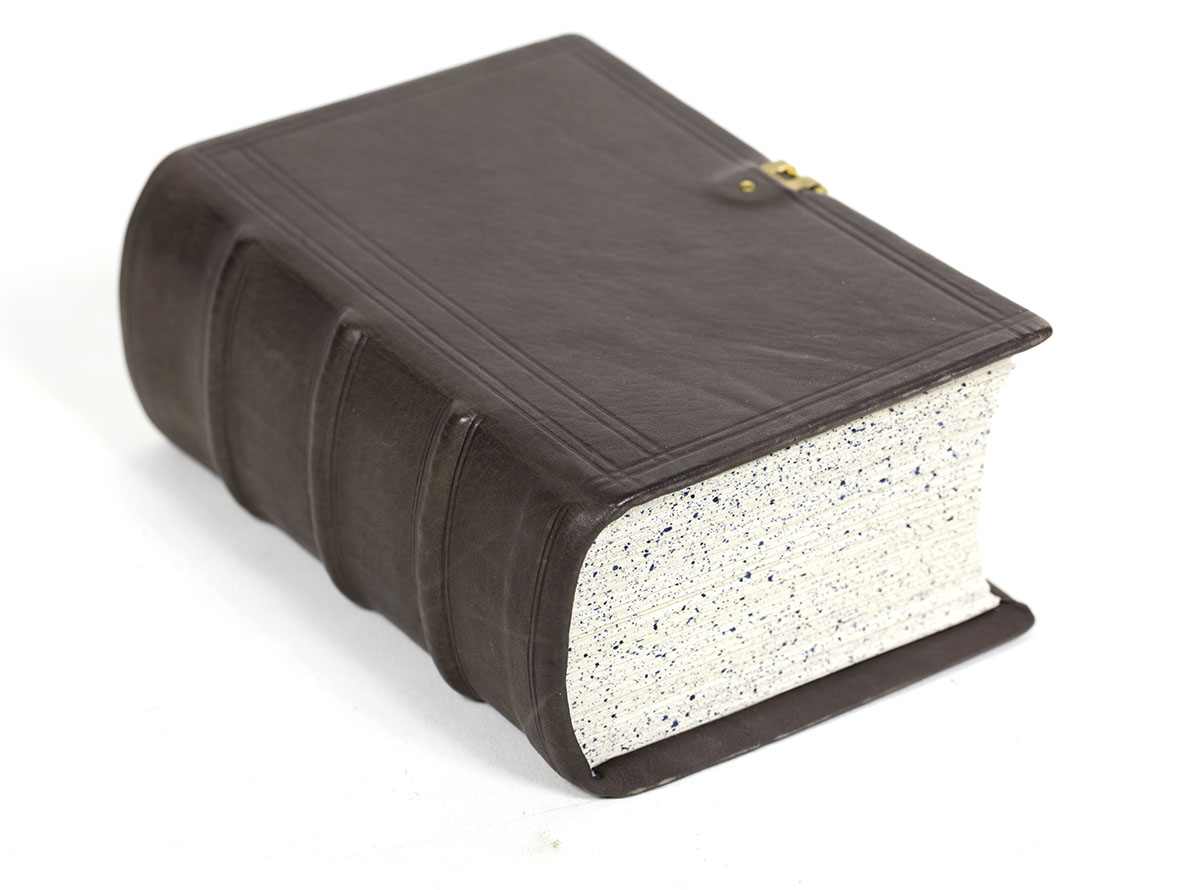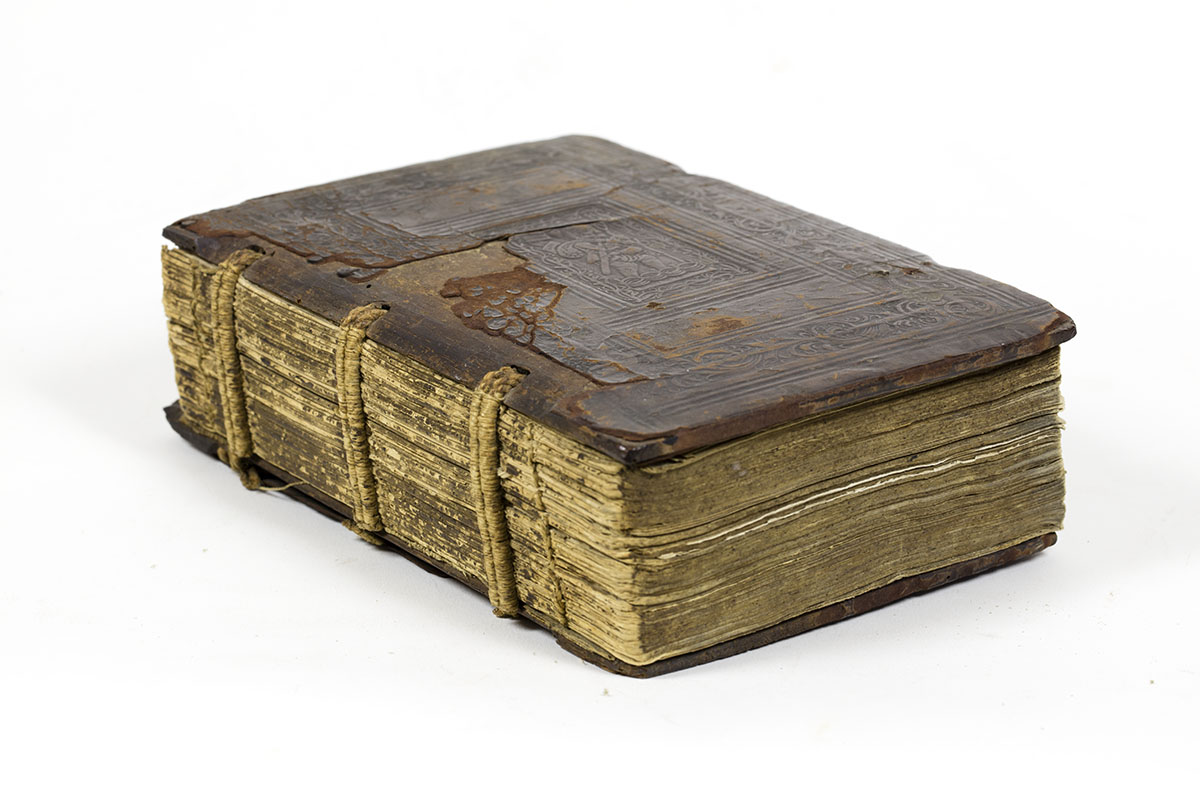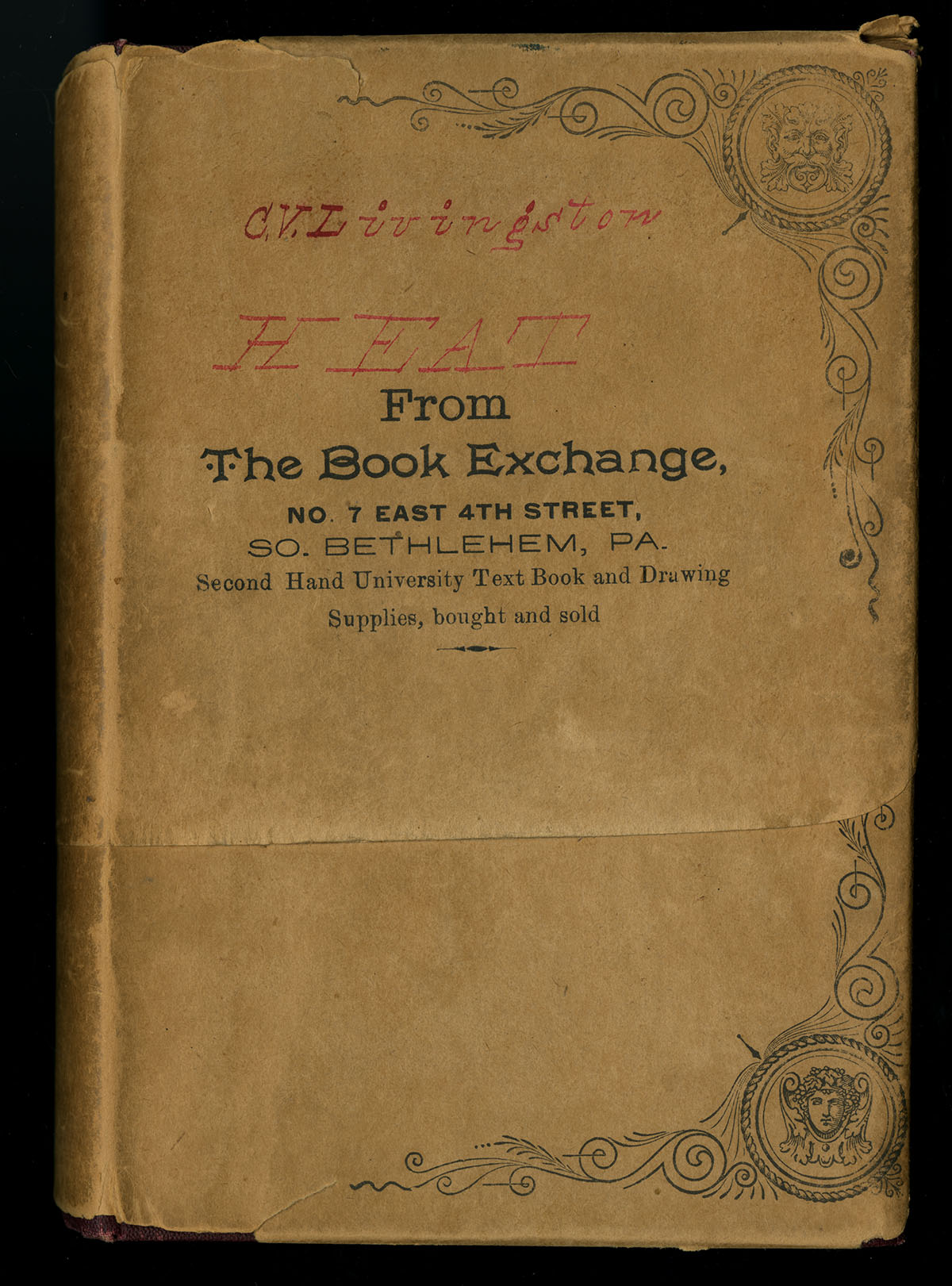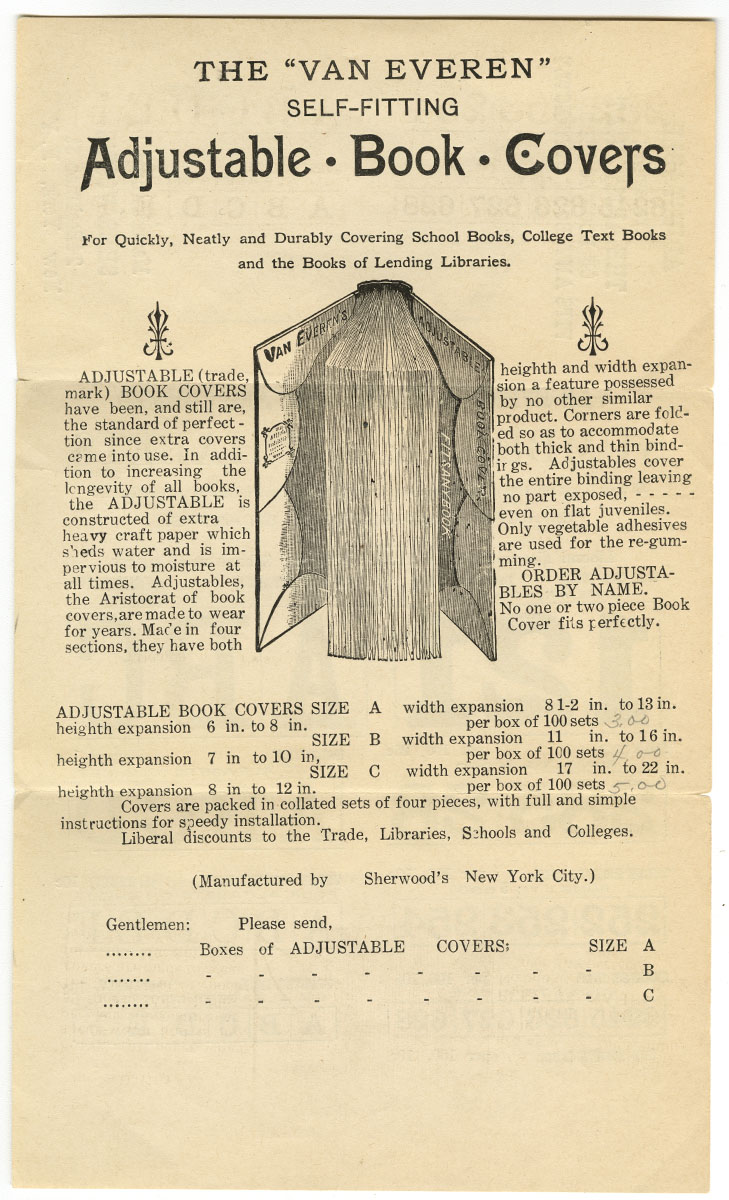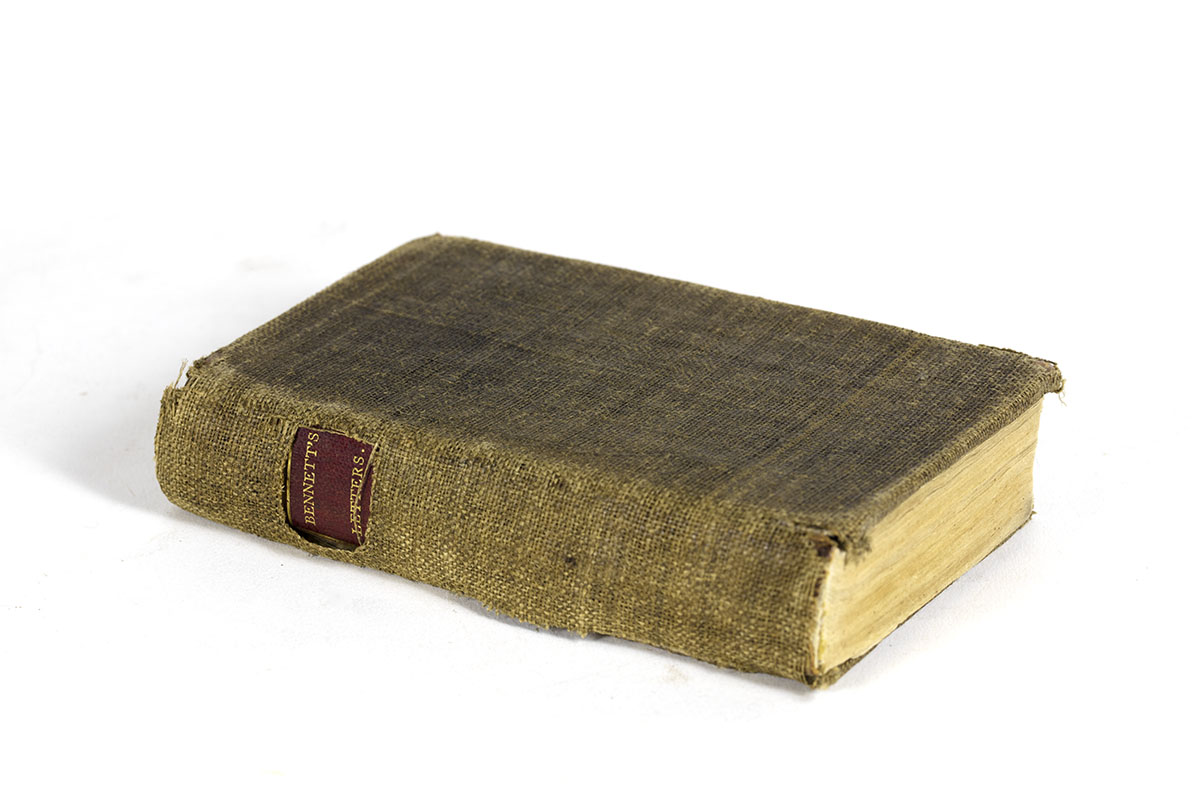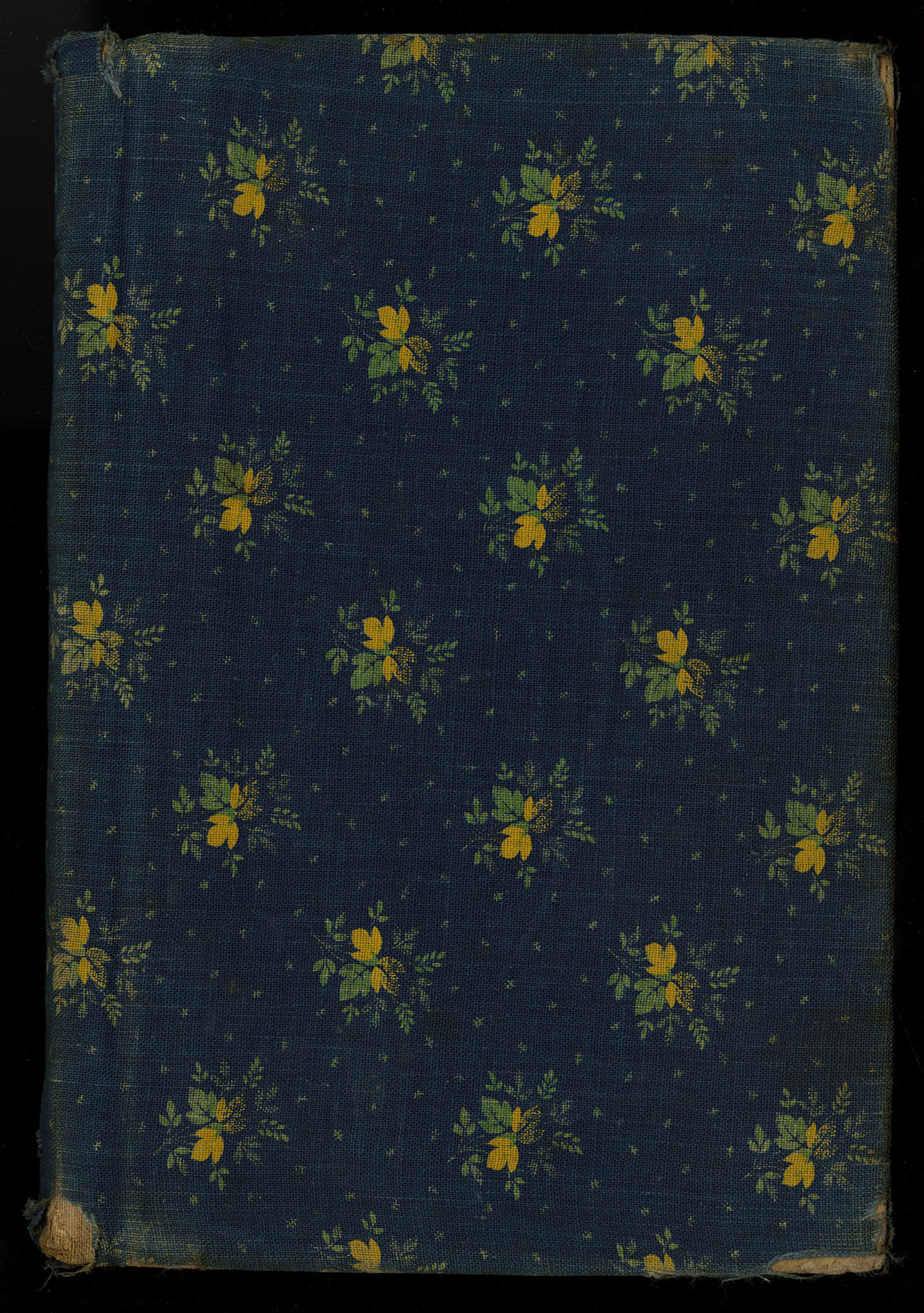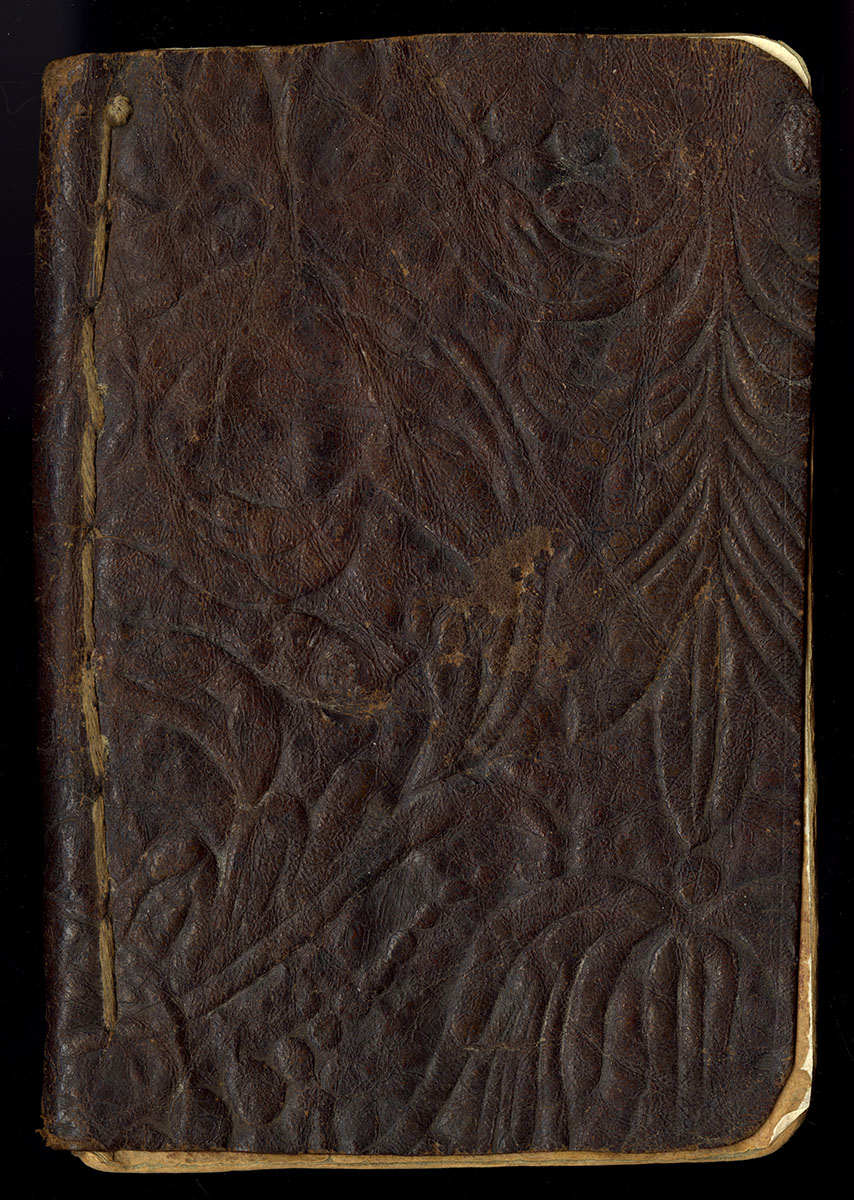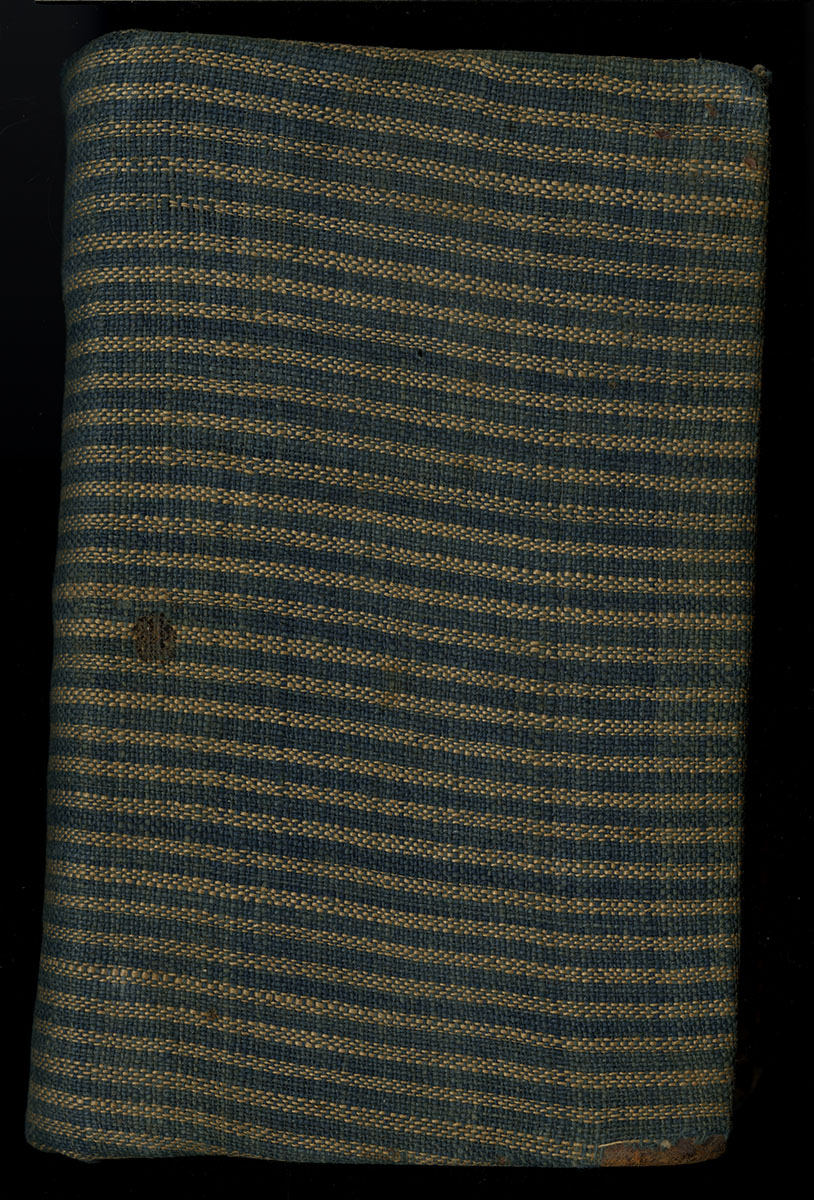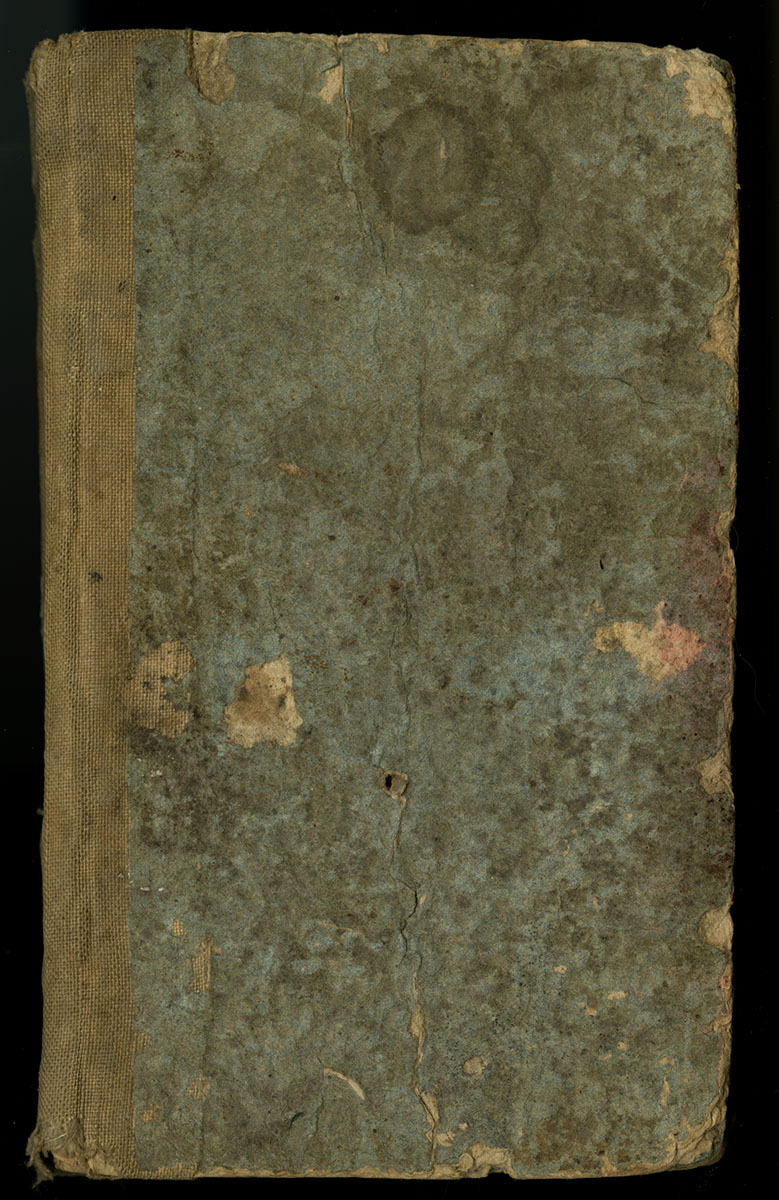The Well Loved Book
Conservators “see” books differently. From our perspective many aspects of the book – the details of its appearance, the stuff it’s made of, and the way it has been put together – are as important as its function as a carrier of knowledge and a source of inspiration.
After all, we don’t just read books. We live with books. As with other common objects that we use daily, books hold traces of our interactions with them. Here we highlight some surprising and sometimes overlooked details that not only delight, but also inform us about ourselves, our habits, and what we value.
The Reader Is Present
Underlining, highlighting, bookmarks, dog-ears and pointing fingers are just some of the things that readers leave behind. We value these traces because they provide fascinating insight into the mind of the reader.
If you cannot resist the temptation to mark your books, as conservators we offer this advice: Use a pencil. To attach something to a page it’s better to use a “mechanical” attachment such as a paper clip. Even a pin, a staple or a needle and thread are preferable to sticky tape which can permanently damage the book.
The Triumphant Chariot of Antimony (London, 1660).
The classic “pointing finger” is also called a manicule. Nowadays manicules exist in digital form.
Cornelius Tacitus, The Works of Tacitus (London, 1753).
The reader, John Dickinson, precisely, deliberately, bent hundreds of page corners to point to paragraphs of note. This evidence of use can provide the historian valuable insight into the reader’s thinking, which would be lost if the corners were unfolded. A typed note on the book tag ensures that a well-meaning user won’t be tempted to “fix.”
Things left in books collection, Library Company of Philadelphia.
Anonymous readers left these lovely bits and pieces inside books as place markers or sentimental tokens, but we have no record of where these pieces of ephemera were found. Without the book as context, they lose meaning. It is our policy now to leave these traces of readership in place.
E.A. Andrews, Leisure Hours, a Choice Collection of Readings in Prose (Boston, 1844). Gift of Todd and Sharon Pattison.
This delicate paper-cutting lives inside the book, right where the reader placed it. A small folder made of mylar lends protection.
John Henry, The Chart of Life, or, The True Theory of Reproduction (New York, 1856).
We suspect we know how this book came to be so folded and tattered. It’s a book on birth control that was probably kept well hidden.
Mathew Carey, Histoire succincte de la fièvre maligne (Philadelphia, 1794).
We appreciate the character of this book’s wrinkles: they speak of an interesting life! We will leave it as is, protected in a box.
Owner repairs
Some books have long and interesting lives. Their battle-scars and mends attest to that. Handmade repairs show us that these books were valued by the people who used them. Today, by comparison, many of the things we buy are not meant to last, but to be consumed and discarded, reflecting a different set of values.
Nehemiah Walter, A Discourse Concerning the Wonderfulness of Christ (Boston, 1713). The Michael Zinman Collection of Early American Imprints.
William Davis, Jesus the Crucifyed Man, the Eternal Son of God (Philadelphia,1700). Historical Society of Pennsylvania.
This cover was made from a recycled leather glove.
Reformed Protestant Dutch Church (U.S.), The Psalms and Hymns of the Reformed Protestant Dutch Church in North America (Philadelphia,1850).
John Marchant, Amusements for the Young (Boston, 1752). The Michael Zinman Collection of Early American Imprints.
The torn page was repaired with a needle and thread.
Lindlay Murray, An Abridgment of Murray’s Grammar (Worcester, 1806). The Davida T. Deutsch Women’s History Fund.
Customization
The book is a prime example of how the form of an object evolves according to its function. Humans can’t help improving and inventing, and books are no exception.
Poor Will’s Almanack (Philadelphia, 1793).
Note the hand-cut index tabs for each month, created by the owner for easy reference to months 1-12.
Assortment of Almanacks, 1808-1825.
Hutchin’s Improved, 1808; Beers’ 1824; Beers’ 1824; Beers’ 1825, Beers’ 1825, Beers’ 1824. Anonymous gift.
The owners of these almanacks added hand-made loops; some are crocheted. We suspect they were for hanging within easy reach of the comfy chair for a relaxing break, or for studying up on the phases of the moon.
Jonathan Edwards, The Life of Rev. David Brainerd (New York, 1834). Michael Zinman Binding Collection.
Someone customized this book by insetting a glass daguerreotype plate. We built a custom-fitted box to protect the delicate cover. Watch a box being constructed on the video screen.
See Video on Home Page
Neu-vermehrt- und vollständiges Gesang-Buch (Germantown, 1763).
A Pennsylvania German liturgical binding.
Historical model of a Pennsylvania German liturgical binding. Jennifer Rosner, 2015.
One way conservators learn about books is by closely studying and comparing details among a group of bindings. The process of creating a functional historical model provides first-hand knowledge and new insight into the inner workings of the book.
Gregor Reisch, Margarita Philosophica (Basel, 1508). Gift of Michael Zinman.
The bare spine allows a rare peek at hidden structures. For this reason we sometimes decide to leave the book in as-is condition, but protected inside a custom-made box.
Wrappers
Book covers take a lot of abuse. A simple wrapper goes a long way to save the covers from wear and tear. Many materials serve the purpose – cloth, newsprint, scraps of leather, as well as patented paper styles like the one shown on the book to the left. We use a mylar wrapper to protect book covers that are delicate or vulnerable to abrasion, dirt and handling.
“The Adjustable Book Cover” Self-adjusting book covers on a copy of Linnaeus Cumming, Heat Treated Experimentally (London, 1894). Michael Zinman Binding Collection.
The “Van Everen” self-fitting adjustable book covers (New York, ca 1918). Gift of Michael Zinman.
Rev. John Bennett, Letters to a Young Lady (Worcester, 1798).
Jacob Groenings, Katholischer Katechismus (New York, 1900). Michael Zinman Binding Collection.
Thomas Prior,The Authentick Narrative of the Success of Tar Water (Boston, 1749).
Rev. John Fletcher, Works (Philadelphia, 1794). The Michael Zinman Collection of Early American Imprints.
Noah Webster, The American Spelling Book; Containing the Rudiments of the English Language for the Use of Schools in the United States (Cincinnati, 1828).
The abraded paper and cloth covers of this copy of Webster’s speller show that it was well-used by many hands over the years. The mylar wrapper will help to preserve what is left.


